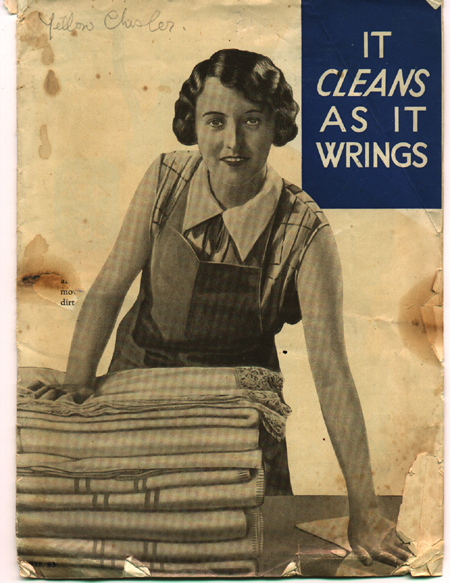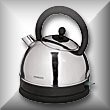          |
 The next thing
was the twin tub - also a Hoover. That had two compartments. One was for
washing - quite a complicated system of the hose being put into the sink - into
the tub and filling it up and electrically heated, and then you put the clothes
in, together with washing powder, then after three minutes you had to transfer
the hose - lift it up, turn it on to lose all that soapy water. Then the
clothes were lifted into the spinner which was a drum with holes, and the
centrifugal force just spun round so the water was going back into the machine
- we didn't waste it, then the clothes came out - the soapy water was out. Then
you took the hose and put the hose from the tap to the drum again - the
spinner. You still had the other tub with the hot water which had come from the
clothes, then you get another lot of clothes and put them in the wash, so while
you have the other clothes in the drum with holes (the spinner) - they had been
spun - the water had come out - you then get the hose from the tap and fill up
this drum with cold water, so then you turn it off, put the lid back on. You
then make sure that the holes in the back go into the sink, because you don't
want that water going into the machine and overflowing. If you make a mistake,
you've flooded the kitchen. The next thing
was the twin tub - also a Hoover. That had two compartments. One was for
washing - quite a complicated system of the hose being put into the sink - into
the tub and filling it up and electrically heated, and then you put the clothes
in, together with washing powder, then after three minutes you had to transfer
the hose - lift it up, turn it on to lose all that soapy water. Then the
clothes were lifted into the spinner which was a drum with holes, and the
centrifugal force just spun round so the water was going back into the machine
- we didn't waste it, then the clothes came out - the soapy water was out. Then
you took the hose and put the hose from the tap to the drum again - the
spinner. You still had the other tub with the hot water which had come from the
clothes, then you get another lot of clothes and put them in the wash, so while
you have the other clothes in the drum with holes (the spinner) - they had been
spun - the water had come out - you then get the hose from the tap and fill up
this drum with cold water, so then you turn it off, put the lid back on. You
then make sure that the holes in the back go into the sink, because you don't
want that water going into the machine and overflowing. If you make a mistake,
you've flooded the kitchen. |
  Images courtesy of The Design Collection at The Arts Institute,
Bournemouth
Interviews
Soundbites


 
|

